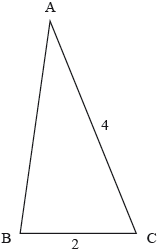| Date | November 2020 | Marks available | 6 | Reference code | 20N.1.SL.TZ0.S_5 |
| Level | Standard Level | Paper | Paper 1 (without calculator) | Time zone | Time zone 0 |
| Command term | Find | Question number | S_5 | Adapted from | N/A |
Question
Let and .
Find the values of so that has no real roots.
Markscheme
* This question is from an exam for a previous syllabus, and may contain minor differences in marking or structure.
METHOD 1 – (discriminant)
correct expression for (A1)
eg
evidence of discriminant (M1)
eg
correct substitution into discriminant of (A1)
eg
recognizing discriminant is negative (M1)
eg
correct working (must be correct inequality) (A1)
eg
A1 N3
METHOD 2 – (transformation of vertex of )
valid approach for finding vertex (M1)
eg
correct vertex of (A1)
eg
correct vertex of (A1)
eg
correct vertex of (A1)
eg
recognizing when vertex is above -axis (M1)
eg , sketch
A1 N3
METHOD 3 – (transformation of )
recognizing vertical reflection of (M1)
eg , sketch
correct expression for (A1)
eg
valid approach for finding vertex of (M1)
eg
correct coordinate of vertex of (A1)
eg
recognizing when vertex is above -axis (M1)
eg , sketch
A1 N3
[6 marks]


